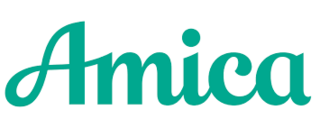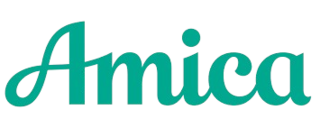5 Best Homeowners Insurance Companies in Connecticut of 2025
Money’s picks for the best homeowners insurance in Connecticut all offer standout coverage. Our list draws from our analysis for the national ranking of the best homeowners insurance providers. Below, we’ve also included other information to help you insure a home in the Nutmeg State, including coverage that will be especially important to Connecticut homeowners.
Key takeaways about homeowners insurance in Connecticut
Connecticut is among the costliest states to buy and own a home. Here are statistics on those costs:
- The average home in Connecticut is worth $435,982, according to real estate experts Zillow. That’s 3.9% higher than a year ago.
- Connecticut has some of the highest property taxes in the country. According to Quicken Loans, the average property tax rate in the state is 1.78% – which translates into an annual tax bill for the average Connecticut home of about $7,750.
- Compared with other states, Connecticut ranks in the middle of the pack – at #24 – when it comes to the cost of homeowners insurance. The average premium has been calculated at about $2,350.
- When mortgage costs and income are considered, Connecticut is the third least affordable state to buy a home.
How we chose our top picks
Money vetted 15 companies after conducting 1,000+ hours of research based on more than 20 data points. Money’s picks for the best homeowners insurance in Connecticut all offer standout coverage and closely mirror the selections in our national ranking of the best homeowners insurance providers. For more on how we select picks, see the methodology below.
Our top picks for Connecticut's best homeowners insurance
Here, listed alphabetically, are Connecticut's top five homeowners insurers. All offer standout coverage and are included in our national ranking of the best homeowners insurance.
- Financial rating:
- A (Excellent) on AM Best
- Discounts:
- Undisclosed
- Bundling options:
- Undisclosed
AIG is known as a luxury insurer that provides comprehensive coverage, from dwelling to cybersecurity insurance, for high-value properties worth up to $100 million. The company scores well above average for customer satisfaction in the J.D. Power U.S. Home Insurance Study.
AIG offers guaranteed replacement cost (without any limits, according to the company) for homes valued from $750,000 all the way up to $100 million on an “all-risk” basis — meaning its policy covers all perils except the few specifically excluded.
It also offers the option of ultra-high deductibles (up to $100,000). This could help significantly lower your premium, but you’ll also pay a lot more out of pocket.
In addition to standard coverage, AIG offers services such as: kidnap, ransom and extortion coverage, landscaping coverage, multinational property coverage and business property coverage.
Read our full review of AIG Homeowners Insurance.
- Financial rating:
- A+ (Superior) on AM Best
- Discounts:
- Bundling, loyalty, claim-free, autopay, electronic bill, alarm system, detection devices
- Bundling options:
- Auto, renters, life, umbrella
Amica is known for top-notch service. The company scores well above average for customer satisfaction in the J.D. Power U.S. Home Insurance Study. Nationally, it has fewer complaints lodged with the NAIC than would be expected for an insurer of its size.
Another standout aspect of the company when it comes to homeowners insurance is its Contractor Connection database. The resource lists thousands of vetted, licensed and insured contractors and guarantees their work with a five-year warranty.
However, Amica rarely offers the cheapest homeowners insurance in price comparisons, so this is an insurer best suited to those who value top-of-the-line customer service over cost savings.
Read our full review of Amica Homeowners Insurance.
- Financial rating:
- Superior (A++) on AM Best
- Discounts:
- Security and safety systems, new or renovated home, gated community, loyalty, claim-free, autopay, electronic bill, alarm system and more.
- Bundling options:
- Auto, renters, life, and umbrella
Chubb scored well above average for customer satisfaction in the latest J.D. Power U.S. Home Insurance Study, as it customarily does. Also, the insurer's Masterpiece policy offers unique benefits beyond the standard homeowners insurance policy, such as risk consulting services, coverage against hijacking, home invasions and more. A standout benefit is that policyholders can opt to get a cash settlement up to the policy's limit if, after damages, they choose not to rebuild the property or opt to rebuild someplace else.
Chubb's also sells private flood insurance, and its policies offer maximum coverage of $15 million, which is notably high even for a private insurer. (By comparison, the federal NFIP program has a $250,000 maximum.)
These rare benefits come at a cost. Chubb is widely regarded as one of the most expensive home insurers on the market, but if its rates fit your budget, it's an excellent choice. In addition to its consistently fine showings in J.D. Power surveys, the insurer has one of the lowest NAIC complaint indexes of all the insurers we reviewed.
- Financial rating:
- A++ (Superior) on A.M. Best
- Discounts:
- Bundling, home security systems, resistant roofing
- Bundling options:
- Auto, renters, life
State Farm is the largest home insurance company in the United States and offers a wide variety of policies, from life to car to condo. This gives customers the chance to bundle in various ways and not only get discounts but also have a more streamlined experience overall.
One reality to State Farm, though, is that the company only works through captive agents. Its agent network is extensive in size, with local representatives in more than 80 communities in Connecticut.
- Financial rating:
- A++ (Superior) on AM Best
- Discounts:
- Bundling, protection devices, detection devices, multi-product (bundling with auto earns 10% discount, additional policies earn 5% discount), loyalty, claim-free
- Bundling options:
- Auto
For military members and their families, USAA offers a great combination of low premiums and broad coverage. Its biggest plus, though, might be its customer service. USAA bested them all the picks on our list in the J.D. Power U.S. Home Insurance Study, even though those other companies all scored above average in customer satisfaction.
USAA is also among the few home insurers that include Guaranteed Replacement Cost coverage as standard, which allows homeowners to replace items rather than receive the depreciated value.
The company is one of the few — along with Erie and Allstate — to offer, at additional cost, home-sharing coverage as an alternative to buying such insurance through Airbnb or Vrbo. Typically, damage to paying guests is not covered under a standard homeowners insurance policy.
Read our full review of USAA Homeowners Insurance.
Tips on homeowners insurance in Connecticut
Here’s what you need to know about threats to Connecticut homes, and the homeowners insurance policies and policy features you need to protect a property in the state.
Important home insurance coverage in Connecticut
Like much of the northeastern United States, including its New England neighbors, Connecticut is relatively cold in winter. That makes it especially useful that homeowners insurance covers the following weather-related home perils.
- Frozen pipes: When temperatures drop below freezing, water pipes in homes can freeze and then burst, causing significant water damage. Homeowners insurance policies typically cover damage not only to replace or repair burst pipes, but the necessary cleanup of water and repairs to affected areas of the home. However, there’s an important caveat: you may not be covered if you were deemed to be negligent by not properly maintaining heat in the home.
- Roof damage: Connecticut’s combination of hot summers and relatively long and severe winters is hard on roofs, which can become brittle from exposure to the temperature differences. Many homes in the state are also surrounded by trees which, together with high winds, can cause roof and other property damage. Homeowners insurance typically covers property damage caused by wind or fallen trees, although coverage may be subject to certain exclusions or limitations.
- Ice dams: Ice dams occur when snow on the roof melts and refreezes at the edges, which creates a barrier that can prevent water from draining properly. This can lead to water seeping into the attic or walls, causing damage to ceilings, insulation and interior spaces. Homeowners insurance may cover repairs for damage caused by ice dams, provided the roof has been well-maintained.
Other insurance coverage for Connecticut homes
Homeowners insurance will cover the consequences from water that enters the home directly, say through a storm-damaged window or roof. But Connecticut has areas that are prone to coastal flooding from heavy rain and ocean surges after major storms. Homeowners insurance will not reimburse you for flood damage.
For insurance purposes, a flood is defined as water or mud that contacts the ground before it reaches your property. Protecting against any damage caused by those conditions requires flood insurance, which you can buy either through the National Flood Insurance Program, a federal agency, or through private insurers.
It’s worth considering such coverage, especially as climate change affects the areas affected by flooding, and the frequency and severity of floods.
In Eastern coastal states, hurricanes and windstorms have a special type of deductible based on a percentage of your chosen coverage amount. This is mostly regulated by state laws. For more on your specific state, visit the Insurance Information Institute.
Consider what lenders may require
Insuring your home is not mandatory in Connecticut, or elsewhere for that matter. However if you’ve taken out a mortgage to purchase your property, the lender will require the property to be adequately insured.
Homeowners insurance coverage is a certain requirement for a property with a mortgage, and to an extent that fully protects you – and, indirectly, the lender – in the event the home suffers serious damage or is declared a total loss.
How to pay less for homeowners insurance in Connecticut
Some simple strategies can lower the cost of your home insurance. Some could even improve the quality and breadth of your coverage in the bargain.
Bundle insurance policies
Switching your homeowners insurance company might alone save you money. But you can also save simply by having your home and car insurance bundled with the same company. The discount if you bundle auto and home insurance typically ranges from about 5% to 15% on the combined premiums. It can also simplify the process of paying the bills for both policies.
Research discounts
Bundling together several types of insurance coverage isn’t the only discount opportunity when you're buying homeowners insurance.
As with car insurance, price breaks may be available if you’re loyal to your insurer for a number of years, especially if you don’t file a claim on your policy over that time. Installing a security system may earn you a discount, particularly if it’s one that connects to a third-party monitoring service.
Other investments that can earn you a reduced premium include installing a new roof that’s more fireproof and less likely to suffer storm damage Then there are breaks based on how you pay – for agreeing to automatic payment of your bill, for example – or how you receive information from your insurer, with a discount for going paperless.
Increase your deductible
The deductible is the portion of a claim you’re required to pay out of pocket before your insurance company pays the rest. Increasing deductibles can make premiums more affordable. However, be careful not to raise the amount to a figure you’d be hard-pressed to pay in the event of the worst happening to your home.
Review your policy regularly
It’s wise to reassess your policy when it comes up for annual renewal, or whenever you make changes to your home. For example, certain changes to your home, like adding a pool or building an extension to it, can increase the property’s value or your liability risk, and so require an upgrade to your coverage.
Reduce coverage - but carefully
It’s generally unwise to insure a home for significantly less than it would cost you to replace it. That said, if you have the most generous reimbursement option under your policy, known as replacement cost coverage, you could downgrade it to the lesser option, for a modest savings on your premium. Actual cost value reimbursement provides you with the current value of what you lost or had damaged . That is, the amount you’d receive would be depreciated for the age and condition of the affected property.
Methodology
After narrowing our choice insurers who wrote select the best homeowners insurance companies, we reviewed the following factors.
- Customer satisfaction: We reviewed J.D. Power’s 2025 U.S. Property Claims Satisfaction Study and the 2024 U.S. Home Insurance Study to gauge customer satisfaction with the insurers on our list. We also looked at the NAIC Complaint Index of select subsidiaries with the largest homeowners insurance market share. With few exceptions, we selected companies with above-average J.D. Power ratings and a low NAIC complaint index.
- Financial strength: We looked at financial ratings from agencies like AM Best and Demotech to ensure that the companies on our list are financially sound and able to meet their insurance obligations.
- Coverage options: Coverage options vary little among insurers. We took special note of companies that offered flood insurance and other riders, such as extended replacement cost coverage and the option to get a cash settlement.
- Market share: Our top picks prioritized carriers that were available nationwide and had a sizable market share. For this, we referenced the NAIC's 2024 Property/Casualty Market Share report.


